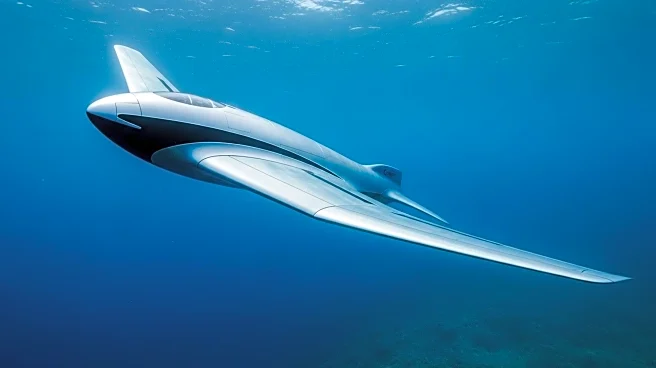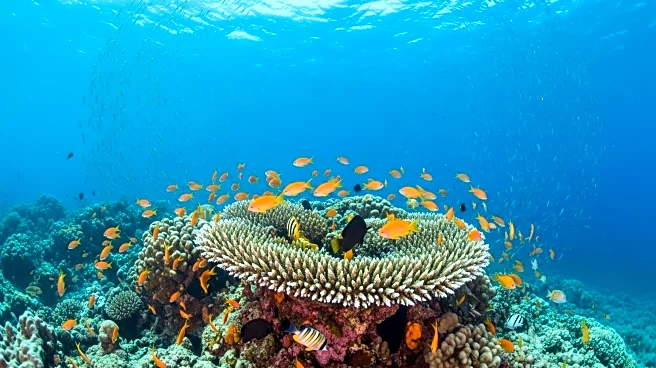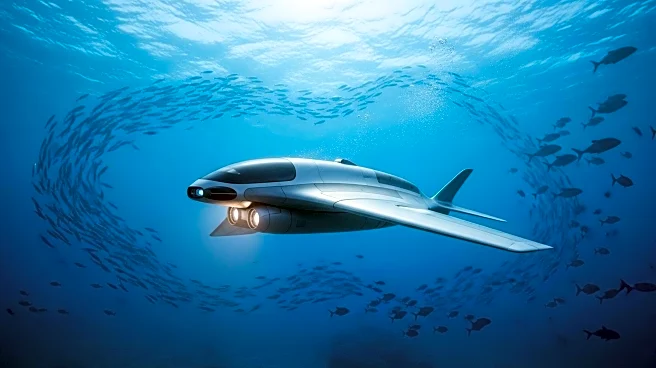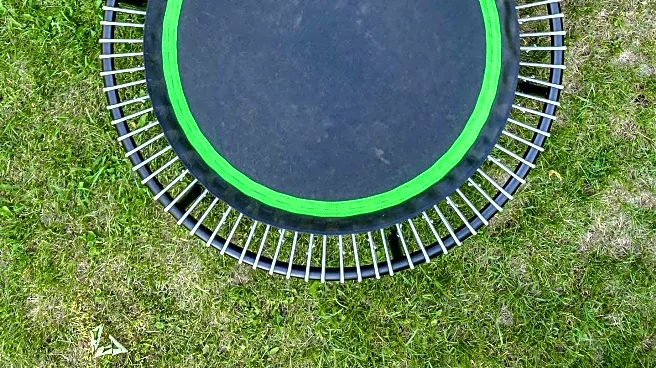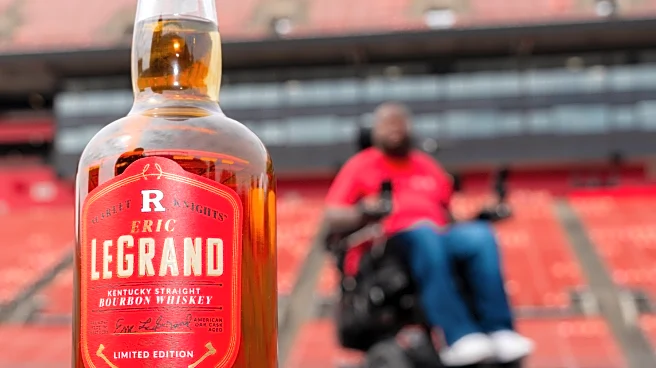What is the story about?
What's Happening?
The Redwing, a robotic underwater glider developed by Teledyne Marine and Rutgers University, is set to embark on a five-year mission to circumnavigate the globe. Launching from Martha's Vineyard, Massachusetts, the glider will follow the path of Ferdinand Magellan's historic voyage. Utilizing a buoyancy engine, the glider will travel at a slow pace, collecting data on ocean currents and sea temperatures. The mission aims to highlight the capabilities of underwater gliders in conducting long-range research without the need for support ships. The glider will be tracked and adjusted remotely, with plans to change its batteries halfway through the journey.
Why It's Important?
This mission represents a significant advancement in oceanographic research, allowing scientists to gather data from remote and challenging environments. The use of robotic gliders can reduce the need for costly and resource-intensive support ships, making ocean exploration more accessible and sustainable. The data collected will contribute to a better understanding of climate change and ocean dynamics, providing valuable insights for environmental policy and conservation efforts. The mission also showcases the potential for technological innovation in scientific research, inspiring future projects and collaborations.
What's Next?
As the Redwing glider progresses on its journey, researchers will continue to monitor its path and adjust its course as needed. The mission's success could lead to more widespread use of robotic gliders in ocean research, potentially expanding their applications to other scientific fields. The data collected will be shared with educational institutions and research organizations, fostering collaboration and knowledge exchange. The mission's progress will be closely watched by the scientific community, with potential implications for future ocean exploration strategies.
AI Generated Content
Do you find this article useful?
